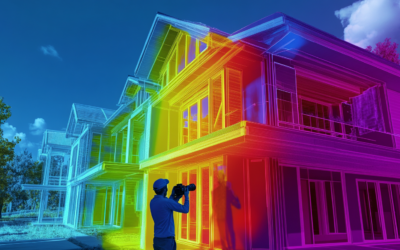Understanding the Importance of Regular Strata Inspections
Owning a strata property is like being a part of a neighborhood that can’t make up its mind — the responsibilities are split, yet everyone seems to have different opinions on how things should be run. When it comes to strata living, the concept of shared responsibilities is both a blessing and a curse. Inspections, though they might sound like a chore, are essential for keeping the property — and communal peace — in one piece.
You wouldn’t skip regular check-ups with your doctor, so why neglect your property’s health? Strata inspections aren’t just about preventing disasters; they’re about preserving harmony among residents and avoiding those awkward lift encounters where no one makes eye contact. Regular inspections ensure everything runs smoothly and helps identify potential issues before they turn into full-blown calamities.
How Often Should You Inspect?
Now, let’s get down to brass tacks. How frequently should strata properties be inspected? While there’s no one-size-fits-all answer, understanding the needs of your property is key. Annually is a good rule of thumb, but some situations may require a closer eye.
First off, think about the age of your building. Older properties, like a retired cat, might need more attention. Regular, perhaps bi-annual, inspections could be beneficial to catch any wear and tear that comes from years of service. Newer buildings might get away with a yearly once-over.
Then there’s the matter of recent renovations or significant changes. Have you rocketed into the modern age with some fancy upgrades? You might want additional inspections to make sure everything’s holding together like it should — after all, you wouldn’t want that ceiling fan to suddenly decide gravity is just a suggestion!
What Should Inspections Cover?
Now that we’ve got the frequency down, let’s dive into what these inspections actually entail. A thorough inspection should leave no stone unturned — or at least make sure the stones aren’t hiding any nasty surprises.
Start with the structural stuff: walls, roofs, and foundations. Think of these as the skeleton of your property. If there are cracks, bowing, or weird noises (like your Uncle Bob on a Thursday after bingo night), it’s time to look closer.
Then there are the interior elements — electrical systems, plumbing, fire safety. These are the veins and arteries, vital for keeping everything alive and kicking. Last but certainly not least, think about common areas. Lobbies, elevators, stairwells; all high-traffic zones that need some TLC.
Utilising Professional Inspection Services
Sure, you could try and tackle inspections yourself, but is it really worth the hassle? Like making a soufflé without a recipe, things could fall flat very quickly. Enlisting professional inspectors can be a lifesaver. They know what to look for — and more importantly, what to look out for.
Professional inspectors bring expertise and a trained eye to identify issues that a regular Joe might overlook. Plus, they come equipped with the tools and technology to get the job done right — no more making do with a torch taped to the end of a broom handle. So, why not leave it to the experts and save yourself the time and stress?
Common Issues Found During Inspections
Now, let’s talk about what might crop up during these checks. Among the most common culprits are water leaks. Like a sneaky cat burglar, they can do a lot of damage before you even know they’re there. They often masquerade as harmless little drips, only to reveal their true destructive potential later on.
Then there’s structural movement and cracking. Properties are a bit like humans; they shift around and stretch as they age. But when they shift too much, it’s time to worry.
Older buildings might also be hiding some ancient wiring, not quite up to scratch with today’s standards. And if you think pests are beneath you, think again. Those little critters can certainly find their way in, no matter how high up you might be.
The Value of Communication
Last but not least, communication is the glue that holds strata living together. Sharing inspection schedules and results keeps everyone in the loop and clears up any misconceptions faster than you can say “I told you so.” It creates a sense of community and ensures everyone is invested in maintaining the property in tip-top shape.
So, there you have it — the ins and outs of strata property inspections. Remember, regular inspections are the best armour against unexpected issues and keep peace among residents. They’re the catch-all for ensuring your shared home remains just that: a home.









0 Comments